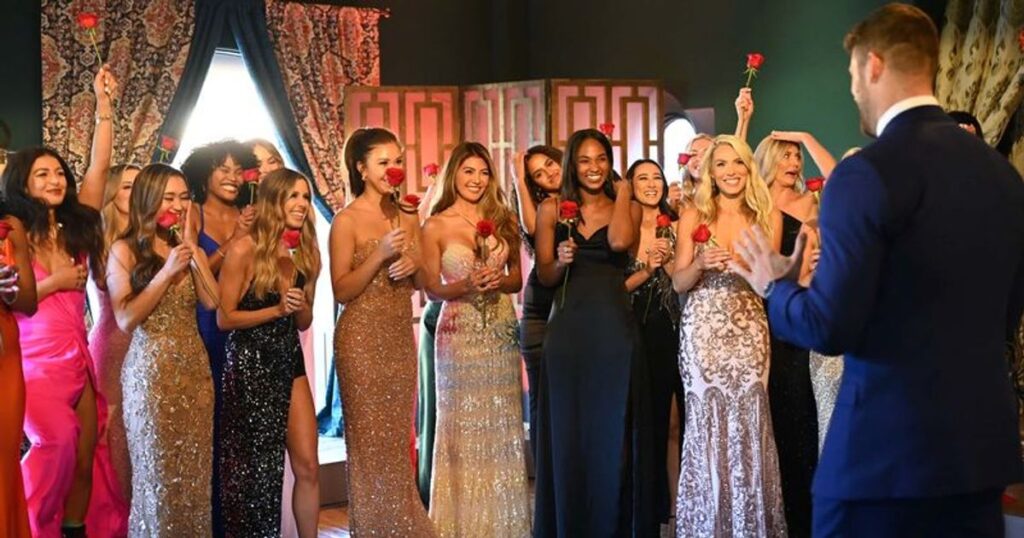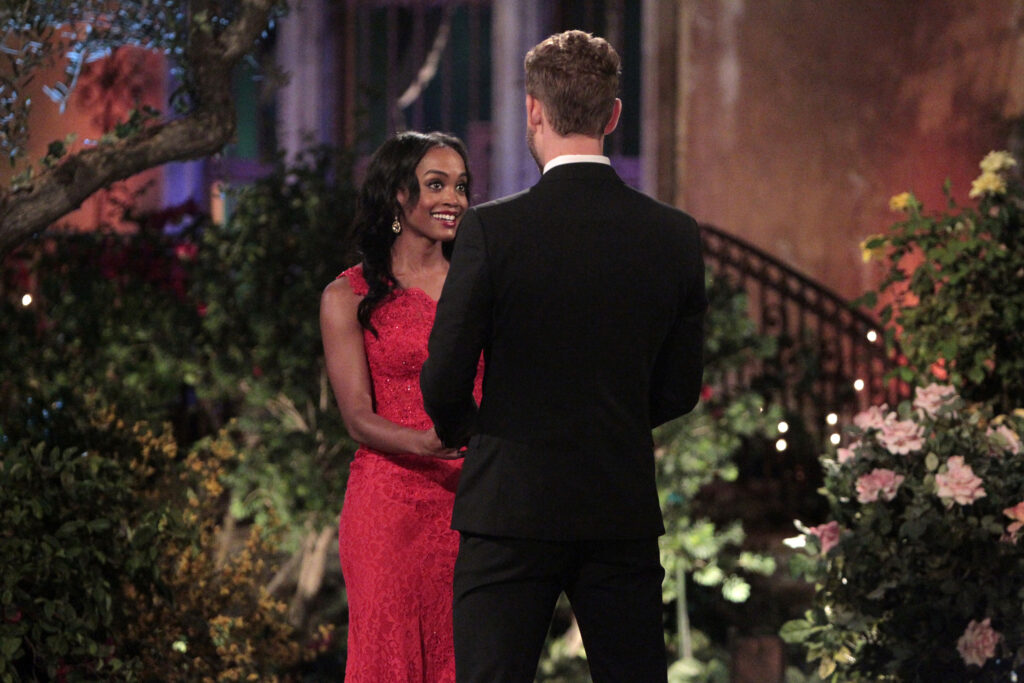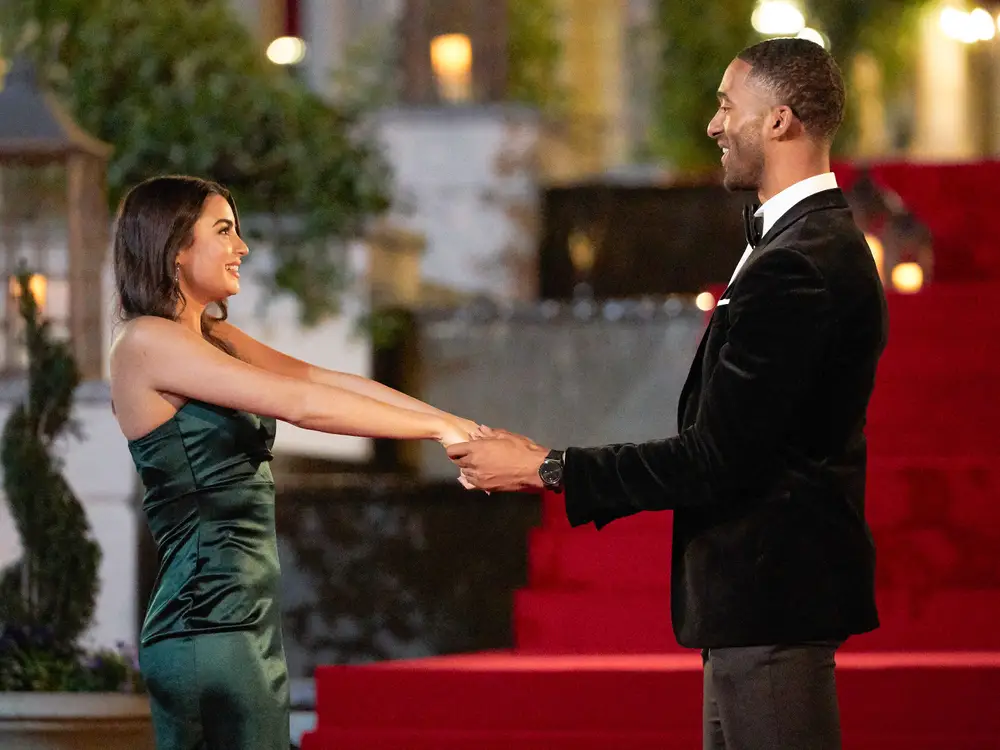
The Next Big Thing
Flashy sets, petty drama, tears, flowery confessions of love, and a host with quippy one-liners. Perhaps these tropes are familiar– if so, you might be thinking of a reality dating show. Skyrocketing into its current place atop the reality tv roster, dating shows have become the most widely watched form of television programming in the past few decades. (Nielsen Media Research).
Beginning in the 1960s with shows like the Dating Game and Love Connection, the genre and its audience have expanded exponentially, with at least 28 dating shows aired on network and cable channels in the year 2000 alone. Among these are names like the Bachelor, the Bachelorette, Dating Story, Taildaters, and Temptation Island.
This rapid increase in popularity indicates a shift in audience preferences. The entertainment industry relies on ratings, and reproduces the kinds of shows that attract the most attention (Roberti, 2007). More of a certain type of show points to a higher demand for its specific kind of content. But where is this demand coming from? Who is the audience fueling the growth of dating reality TV?
“Bachelor Nation”
Behind the success of reality dating shows is an ever-growing loyal fanbase. From the guilty pleasure watchers, to the critical consumers, “Bachelor Nation” consists of a wide variety of consumers. However, its most prominent demographic is mostly single, white women, in their late twenties (Roberti, 2007). Research indicates that these women tend to be of higher education and income bracket, spending more average time per week watching television compared to those who do not consume reality dating shows.
Additionally, research suggests that consumers of programs like the Bachelor tend to possess certain specific traits, the most prominent of which is “sensation seeking,” (119) or looking for stimulation in things like entertainment to supplement real experience and exposure (Roberti, 2007). Sensation-seeking, specifically experience-seeking and disinhibition, is predictive of the weekly number of hours spent watching tv dating shows.

The Cinderella Story
One possible appeal to its audience is the idea of “the Cinderella Story.” The premise of the Bachelor is simple: 33 lucky young women are given the opportunity to fight for the hand of one handsome, charming, young man. He is the ultimate prize, the ultimate confirmation of worth, beauty, and status. Over the course of 6 weeks, the pool is slowly narrowed, with the bachelor dismissing women one by one in ritualistic ceremony, until only one woman remains. Typically, when the season ends, the happy couple is engaged, with a large supporting fanbase following their subsequent journey together.
Winners of the show are conventionally beautiful, thin, but ultimately “normal” women, coming from jobs like accounting, real estate, education, and nursing. They are propelled into internet fame, often amassing hundreds of thousands of followers on their various social media platforms, and acquiring distinct influence in the rapidly expanding niche of “Bachelor Nation.” Using glittering dresses, beautiful scenery, flowery declarations of love, and a seemingly fairytale ending, the Bachelor directly relies on the familiar “rags to riches” trope to motivate its audience. And this tactic is compelling– viewers often identify with certain contestants over others, tuning in week after week to root for the woman that they believe deserves her happily ever after (Haden et. al., 2020).

The Bachelorverse on Twitter
As a predominantly younger generation, “Bachelor Nation” is also largely social media savvy. This aspect of the show’s audience demographic is critical– with access to wide reaching platforms like Twitter, shows like the Bachelor are able to keep the conversation going, providing more opportunity for audience engagement, and promoting the program to a younger audience. This access can translate into big money for the franchise (Chozick and Carter 2013; Sotonoff 2011). Forums like Twitter allow for inter-fan connection, discussion, and ultimately, greater attention and loyalty to the show itself (Nesmith, 2012).
The show and its viewers exist in an ever-evolving symbiotic relationship; online fan input has become a unique and critical aspect of the show’s success. New contestants for upcoming seasons are chosen based on audience preference and popularity.
Rife with Issues
While its version of reality might be fake, the Bachelor franchise is not without its own very real problems. Racism, fatphobia, and sexism all stem from the Bachelor’s history of promoting a very specific image of romance: white, heterosexual, conventionally attractive. For years, critics of the show have cited lack of representation as one of its greatest flaws– it was only in 2021 that Matt James became the first Black Bachelor, following his co-star Rachel Lindsay as the first Black Bachelorette in 2017 (Conscarelli, 2017).


The very nature of the Bachelor in its attempt to find the “perfect match” simultaneously promotes the idea of the “perfect woman”: authentic yet in control, open yet decisive, independent and successful, all while reducing her value to her potential performance as a partner to the ultimate main character, the Bachelor. Additionally, the smaller body types of contestants, despite criticism, remain the same.
The Bachelor also fosters a culture of women criticizing other women. Due to the largely female audience demographic (Roberti, 2007), much of the attention contestants receive comes from women who watch the show. Intense scrutiny comes with such exposure. Many audience comments are petty, relating to the contestant’s looks, and assaulting their personal character. Female contestants are berated, fat shamed, and bullied by other women in ways that would be unacceptable coming from men (Kramer, 2019).
Even the content of the show itself encourages this kind of behavior: due to its competitive nature, much of the show consists of contestants gossiping about one another, sabotaging each other in order to enhance their own chances. They model the very behavior that is then replicated by their fan bases. In this way, reality TV has very real consequences. A large portion of viewers are also distinctly aware of the show’s inauthenticity. A study even indicated that a statistically significant portion of viewers found the very premise of the show hard to believe. An even larger portion “watch the show ironically because it is so ridiculous” (Haden et. al., 2020). It is clear that, while entertained, many Bachelor consumers watch this content with a heavy degree of skepticism.
So has the Bachelor become too problematic? Have we as an audience outgrown this heteronormative, privileged, performance of romance? Maybe. The show itself may represent an ideal that we no longer wish to aspire to, but, when all is said and done, it’s certainly entertaining to watch.
References:
Beresin, E. V., & Olson, C. K. (2018). Child and adolescent psychiatry and the media. Elsevier Health Sciences.
Church, S. H., Robinson, T., Callahan, C., Klotzer Barboza, K., & Montez, D. (2020). Savvy viewers and (simulated) reality TV: An analysis of The Bachelor’s appeal to viewers. The Journal of Popular Television, 8(1), 23-43. https://doi.org/10.1386/jptv_00009_1
Conscarelli, J., & Ganz, C. (2017, June 28). ‘The Bachelorette’ Leans on a Racial Conflict, and Nobody Wins. New York Times https://www.nytimes.com/2017/06/28/arts/television/bachelorette-rachel-lee-kenny.html
Kramer, J. S. (2019). It’s Okay That We Back-Stab Each Other: Cultural Myths That Fuel the Battling Female in The Bachelor. In Race/Gender/Class/Media: Considering diversity across audiences, content, and producers (pp. 168-172).
Nesmith, N. K. (2017). A Networked Family: How Fans Talk About The Bachelor on Twitter . University of Illinois at Chicago. https://hdl.handle.net/10027/22153
Roberti, J. W. (2007). Demographic characteristics and motives of individuals viewing reality dating shows. The Communication Review, 10(2), 117-134.
Spencer, C., & Paisley, K. (2013). Two women, a bottle of wine, and The Bachelor. Journal of Leisure Research, 45(5), 695-716. https://doi.org/10.18666/jlr-2013-v45-i5-4370